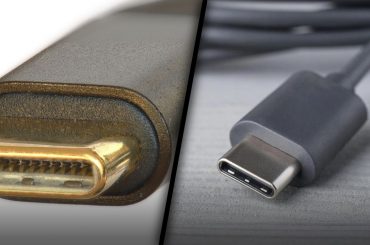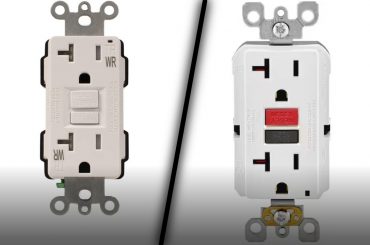Considering whether to use bromine or chlorine to sanitize your hot tub? While both chemicals effectively maintain cleanliness and safety, understanding their differences is crucial before deciding.
Hot tubs serve various purposes, with the top three being: aiding sleep, facilitating post-exercise recovery, and promoting injury rehabilitation. For instance, some utilize hot tubs to alleviate sleep issues, capitalizing on the temperature dynamics for better rest. Others leverage the warm water to soothe muscles after workouts, while some use hydrotherapy for targeted pain relief.
Despite the diverse benefits, concerns about water chemicals shouldn’t overshadow the positive experiences hot tubs offer. In this blog post, we’ll delve into the advantages and disadvantages of bromine and chlorine, empowering you to choose the most suitable option. Stay tuned to make an informed decision!
Oxidizers vs Ionizers – How They Work?
Hot tub sanitation may seem as straightforward as adding a bag of powder, but the reality is far more intricate. There are two primary methods for achieving hot tub sanitization: oxidation and ionization.
Though both approaches target water sanitation, their mechanisms differ significantly. Oxidation involves the reduction of an oxidizing agent through electron gain in a chemical reaction. Conversely, ionizers release negative ions, which electrically charge other particles in the water.
The Chlorine – Oxidizer
Chlorine serves as a potent sanitizer, swiftly eliminating germs by oxidizing and destroying bacteria and other harmful organisms in the water. Its action involves breaking down waste left behind from neutralizing contaminants, effectively forcing them out of the water in gaseous form.
This efficacy makes chlorine an ideal option for pools or hot tubs frequented by multiple individuals, as it rapidly eradicates germs, ensuring clean water.
The Bromine – Ionizer
In contrast, bromine functions as an ionizer, releasing ions into the water to combat bacteria and viruses. Known for its milder nature compared to chlorine, bromine lacks the strong odor and potential side effects associated with its counterpart. This makes it a preferred option for individuals with sensitive skin or those seeking to avoid chlorine’s potent scent.
As a potent disinfectant, bromine effectively eliminates various pathogens, including challenging waterborne viruses like poliovirus and rotaviruses, along with a broad spectrum of bacteria.
However, it’s worth noting that bromine doesn’t oxidize ammonia or other nitrogen substances, potentially limiting its effectiveness against certain contaminants containing these elements.
Bromine vs Chlorine Differences
Despite their perceived interchangeability, bromine and chlorine possess notable distinctions. Ultimately, the decision between the two will hinge on personal preferences. To facilitate your decision-making process, let’s delve into these differences.
Elements vs. Compounds
Chlorine and bromine, both elements found on the periodic table, belong to the same chemical family known as “oxidizers.” They disinfect by oxidizing microbes, chemically degrading them. However, in the context of sanitizing hot tub water, they are typically not used in their pure elemental forms. Instead, they are utilized as compounds:
- Chlorine tablets
- Bromine granules
These compounds offer greater stability and ease of handling compared to pure chlorine or bromine. Additionally, bromine can be generated at low concentrations in water by combining active chlorine with a relatively benign bromine salt called bromide.
Effectiveness and Reactivity
When considering effectiveness, both bromine and chlorine excel in maintaining clean tub water. However, chlorine exhibits greater reactivity and faster action, rendering it more suitable for larger bodies of water such as swimming pools. Conversely, bromine’s stability makes it better suited for hot tubs, especially those with higher water temperatures.
Studies have shown that liquid bromine at 1.0 ppm is as efficacious as 0.6 ppm of available chlorine hypochlorite control when tested against E. coli. Furthermore, bromine demonstrates superior effectiveness over chlorine at elevated pH levels. Bromine remains stable in warm water temperatures above 75°F, whereas chlorine maintains efficacy in temperatures as low as 65°F.
How the Body is Affected
Chlorine’s impact on the skin and eyes can be harsh, particularly for individuals with sensitive skin or respiratory conditions like asthma. Common effects of chlorine exposure in hot tub users include:
- Skin, eye, and hair irritation when chlorine levels are too high.
- Respiratory difficulties from lingering chloramines in the humid air around the hot tub.
In contrast, bromine offers a gentler alternative with a milder odor. However, some individuals may find it irritating as it tends to linger on the skin longer. Effects of bromine exposure in hot tub users may include:
- Dizziness, nausea, vomiting, burning sensations in the mouth and throat, stomach pain, and bloody stools when bromine levels are excessive.
It’s crucial to highlight that mixing bromine and chlorine can result in the formation of halogenated hydrocarbons, which can be harmful to the skin, eyes, and respiratory system. Furthermore, this combination can lead to unstable pH levels in the hot tub, causing discomfort during soaking.
Water Transparency
Both bromine and chlorine excel at preserving the clarity of hot water, ensuring it remains clear and transparent. However, bromine exhibits greater efficacy in maintaining water clarity, particularly in high-temperature environments such as hot tubs.
Application
Chlorine is commonly administered to hot tub water in the form of tablets or granules, whereas bromine is frequently utilized in tablets or via a floating dispenser. While both approaches effectively sanitize hot tub water, the convenience of tablets or a floating dispenser is often preferred.
Dosage Amounts
In terms of dosage, you’ll generally require a higher amount of bromine compared to chlorine for your hot tub. For every 500 gallons of water, you typically add 4 tablespoons (or 2 ounces) of chlorine. Conversely, for hot tubs and spas, you should add 3 tablets for every 300 gallons of spa water using a floating tablet feeder or an automatic brominator installed on the hot tub. However, because bromine has a longer-lasting effect in water than chlorine, it doesn’t need to be added as frequently.
Shocking Procedure
If you’re encountering problems with your hot tub water, such as cloudiness or a pronounced odor, it might be necessary to shock your hot tub with a significant dose of either chlorine or bromine. Both chemicals are capable of effectively shocking your hot tub water, but it’s essential to meticulously follow the manufacturer’s instructions to prevent any damage to your hot tub.
High Temperatures:
Hot tubs are usually maintained at elevated temperatures compared to swimming pools, creating an environment conducive to the growth of bacteria and contaminants. Consequently, it’s crucial to utilize a sanitizer that remains effective at these higher temperatures.
Bromine typically exhibits greater stability than chlorine in hot tubs, rendering it a preferred option. Nonetheless, both chlorine and bromine can be effective in hot tubs when adequately maintained.
Costs
When considering cost, bromine generally comes at a higher price point compared to chlorine. Bromine typically costs around $10 per pound (prices may vary based on the vendor), whereas chlorine (dichlor) is approximately $5 per pound. Both chlorine and bromine should typically be added to a hot tub 2-3 times per week, although the frequency may vary based on usage and personal preference for sanitizer type. Chlorine tends to degrade more quickly in heat, requiring slightly more frequent additions. Your choice of sanitizer will influence the operational expenses of maintaining a hot tub.
Environmental Impact:
Improper use and disposal of both chlorine and bromine can potentially harm the environment. Chlorine may react with organic substances in water, generating harmful byproducts, while bromine can endure in the environment, posing risks to aquatic life.
For those mindful of their hot tub’s environmental impact, there are alternative, more eco-friendly sanitizers available, such as mineral-based options.
Is PH an important consideration in bromine vs. chlorine for my hot tub?
Certainly, pH plays a vital role in determining the effectiveness of bromine or chlorine in your hot tub. Here’s a breakdown of key considerations for each chemical:
Bromine: Over time, bromine gradually lowers the pH and alkalinity levels of the hot tub. With a lower pH compared to chlorine, bromine is adept at balancing the overall water chemistry. Optimal hot tub bromine levels typically range between 3-5 parts per million (ppm).
Chlorine: Primarily employed for hot tub water sanitization, chlorine also reduces pH levels in the hot tub but is generally less potent than bromine. The recommended chlorine level in a hot tub falls between 1 and 3 ppm.
Both bromine and chlorine can experience diminished effectiveness at specific pH levels:
Bromine: Demonstrates superior efficacy over chlorine at elevated pH levels. Hypobromous acid, along with other bromine compounds, serves as a highly effective biocide, broadening the spectrum of pathogens it can eliminate.
Chlorine: Shows greater effectiveness at lower pH levels. As pH increases, the sanitizing power of free chlorine diminishes, resulting in weaker efficacy.
Maintaining water balance with a pH level between 7.2 and 7.8 is crucial for optimizing the effectiveness of both chemicals.
What is the best sanitizer type for your hot tub – granules or tablets?
The ideal sanitizer for your hot tub hinges on your individual preferences and the unique requirements of your tub. Granules offer convenience, allowing direct addition to the water, while tablets, with their slower dissolution rate, are often utilized in floating dispensers.
FAQ
Can you switch from chlorine to bromine in a hot tub?
Indeed, transitioning from chlorine to bromine in your hot tub is possible. However, it’s imperative to drain and thoroughly clean your hot tub beforehand, as chlorine and bromine should never be mixed together.
Which is healthier: chlorine or bromine?
When employed correctly, both chlorine and bromine serve as safe and efficient sanitizers. Your decision between the two will ultimately be influenced by your personal preferences and the particular requirements of your hot tub.
Which is better for your skin, chlorine or bromine?
Bromine is typically regarded as being milder on the skin compared to chlorine, making it a preferred option for individuals with sensitive skin.
Is it OK to mix chlorine and bromine?
Mixing chlorine and bromine is not safe as they can react with each other, leading to a hazardous chemical reaction. This combination may produce toxic fumes and pose a fire hazard. Hence, it’s imperative to use only one type of sanitizer in your hot tub and refrain from mixing them.
Low chemical Hot Tub Alternatives
If you prefer a hot tub with minimal chemicals or seek low-chemical alternatives to traditional sanitizers, there are several options to consider. One popular choice is ozone generators, which produce ozone gas to naturally sanitize the water. Another alternative is mineral-based sanitizers, leveraging copper and silver ions to combat bacteria and algae. Additionally, some hot tub owners opt for enzymes, which effectively break down organic material in the water, thereby reducing the reliance on chemical sanitizers.
Which is better: bromine or chlorine for a hot tub?
Deciding between bromine and chlorine for your hot tub relies on your individual preferences and requirements. Bromine may be a preferable option if you are sensitive to the effects of chlorine.





